December 2017:

Silicon Valley Is Sneaking Models Into This Year’s Holiday Parties
Source: Bloomberg
“Along with a seemingly endless string of harassment and discrimination scandals, Silicon Valley’s homogeneity has a more trivial side effect: boring holiday parties. A fete meant to retain all your talented engineers is almost certain to wind up with a rather same-y crowd, made up mostly of guys. At this year’s holiday parties, however, there’ll be a surprising influx of attractive women, and a few pretty men, mingling with the engineers. They’re being paid to.
Local modeling agencies, which work with Facebook- and Google-size companies as well as much smaller businesses and the occasional wealthy individual, say a record number of tech companies are quietly paying $50 to $200 an hour for each model hired solely to chat up attendees. For a typical party, scheduled for the weekend of Dec. 8, Cre8 Agency LLC is sending 25 women and 5 men, all good-looking, to hang out with “pretty much all men” who work for a large gaming company in San Francisco, says Cre8 President Farnaz Kermaani. The company, which she wouldn’t name, has handpicked the models based on photos, made them sign nondisclosure agreements, and given them names of employees to pretend they’re friends with, in case anyone asks why he’s never seen them around the foosball table.
“The companies don’t want their staff to be talking to someone and think, Oh, this person was hired to socialize with me,” says Kermaani, who’s sending models to seven tech parties in the same weekend. Tech companies have long used models to run their booths at trade shows such as CES in Las Vegas, hype up crowds at product launches, and direct foot traffic at conferences. That said, this year’s record-setting requests for the minglers, known as “ambiance and atmosphere models,” are a step beyond what the industry has seen before, says Chris Hanna, who’s run TSM Agency since 2004 and counts among his clients “one of the largest search engines in the world.” Bloomberg

Gene Editing ethical questions
“In the last five years, biology has undergone a seismic shift as researchers around the globe have embraced a revolutionary technology called gene editing. It involves the precise cutting and pasting of DNA by specialized proteins—inspired by nature, engineered by researchers. These proteins come in three varieties, all known by their somewhat clumsy acronyms: ZFNs, TALENs, and CRISPRs.
So how does it work?
When people refer to Crispr, they’re probably talking about Crispr-Cas9, a complex of enzymes and genetic guides that together finds and edits DNA. But Crispr on its own just stands for Clustered Regularly Interspaced Palindromic Repeats—chunks of regularly recurring bits of DNA that arose as an ancient bacterial defense system against viral invasions. Viruses work by taking over a cell, using its machinery to replicate until it bursts. So certain bacteria evolved a way to fight back. They deployed waves of DNA-cutting proteins to chop up any viral genes floating around. If the bacteria survived the attacks, they’d incorporate tiny snippets of virus DNA into their own genomes—like a mug shot of every foe they’d ever come across, so they could spot each one quicker in the future. To keep their genetic memory palace in order, they spaced out each bit of viral code (so-called “guide RNAs”) with those repetitive, palindromic sequences in between. It doesn’t really matter that they read the same forward and backward; the important thing is that they helped file away genetic code from viral invaders past, far away from more essential genes. And having them on file meant that the next time a virus returned, the bacteria could send out a more powerful weapon. They could equip Cas9—a lumpy, clam-shaped DNA-cutting protein—with a copy of that guide RNA, pulled straight out of storage. Like a molecular assassin, it would go out and snip anything that matched the genetic mug shot. That’s what happens in the wild. But in the lab, scientists have harnessed this powerful Crispr system to do things other than fight off the flu.
Crispr isn’t perfect; sometimes the protein veers off course and makes cuts at unintended sites. So scientists are actively working on ways to minimize these off-target effects. And as it gets better, the ethical questions surrounding the technology are going to get a lot thornier. Hello, designer babies?! Figuring out where those lines get drawn is going to take more than science; it will require policymakers and the public coming to the table.” Wired

“Seven Beauties” by Lina Wertmüller, a must-see film
Seven Beauties, Pasqualino Settebellezze, is another wonder from Italian cinema, an unique movie; it is very entertaining and funny and at the same time, a very meaningful and deep film. Throughout the film the viewers have a double feeling of wanting to laugh and at the same time to cry! It is an exceptional movie that sticks in the viewers mind forever. It proves that its writer and director, Lina Wertmüller deserves to be considered the best female filmmaker of all time and her name should be included in the list of the best filmmakers of all time alongside Fellini and Pasolini.

The following is the Interview with Lina Wertmüller by Nick Vivarelli for Variety:
“In the 1970s, Lina Wertmüller burst on the international scene with a string of groundbreaking movies combining satire and sociopolitical commentary, New York City’s venerable arthouse Quad Cinema is marking its reopening this month with a retrospective of the Italian director’s films, including “The Seduction of Mimi” (1972), “Love & Anarchy” (1973), “Swept Away”(1974), and “Seven Beauties” (1975), a tragicomedy starring Giancarlo Giannini that made Wertmüller the first woman nominated for a best director Oscar. Her first mention in Variety came in a Jan. 13, 1965, review of “Il giornalino di Gian Burrasca,” an eight-episode musical TV series about a mischievous street kid, which the reviewer described as “clever and intelligent.” Aside from directing, she wrote 35 songs for the miniseries with composer Nino Rota. Aside from writing and directing for film and TV, the 88-year-old Wertmüller has directed operas and composed numerous Italian pop songs.
Gian Burrasca” was a drastic departure from “I basilischi.” Why is that?
I’ve made almost 40 movies of many different genres. I’ve been drawn to each one for different reasons. “Gian Burrasca” was my mother’s favorite book. After “I basilischi,” which launched from the Locarno Film Festival, I was concerned that I would be perceived as a director who was too socially conscious; so to lighten things up I decided to do something completely different. Really, there are two strands — two souls — which coexist in my work: the lighthearted one associated with musical comedies and the more socially conscious one. They are both deeply part of my nature.
Many people don’t realize that you’ve written hit pop songs. How did you work with the great Nino Rota?
Nino was a friend. He would come over to my mother’s for lunch, after which he usually fell asleep. We used to say that under his coat, Nino had angel’s wings; he was a very sweet man! It took us a couple of weeks at the piano to write those songs. I wrote the words and he composed the music.
What was it like to be the assistant director on “8½”?
Working with Federico Fellini was a great adventure. But now it’s all a bit of a blur. He was such an extraordinary human being that he’s hard to describe. I met him thanks to my friends Flora and Marcello Mastroianni. I was very lucky to be chosen. There was a long line of aspiring assistant directors who would have killed to be with him and see him work. Actually, I was a lousy AD, but I was forgiven because I was “simpatica.”
How did you become friends with Flora Clarabella, who was Mastroianni’s wife?
We were at school together. I got kicked out of 11 schools; she was in one of those schools.
Do you remember the Oscar ceremony?
I never gave prizes that much importance. I’ve been pleased to get them, and they are useful. But they aren’t that big a deal. What I really cared about was having fun and being entertaining, which does not mean I didn’t work very hard. What I remember about the Oscar ceremony is that they had given me a really good seat but I didn’t want to sit there because I didn’t have any friends next to me. So I moved to another seat near a friend, and I gave that seat to Flora. When they announced who the nominees were, the TV cameras zoomed on Flora and they said she was me.
U.S. critics really loved you — perhaps more than Italian ones.
Especially John Simon, who wrote for New York magazine, and was very feared. One day after seeing “Seven Beauties,” he told his editor “I’ve seen the work of a genius!” and the editor paid his trip to Italy to meet me. So he came. I didn’t realize how important he was, and to tell the truth I didn’t really give a rat’s ass. But he’s a very sweet man.”
November 2017:
Artificial Light Pollution
“Areas of our planet are quickly losing their night sky and the problem is getting worse, scientists have warned.;New research has shown that the use of artificial lighting coming off of lampposts, buildings and cars is leading to a loss of night in many areas across the globe. The ‘death of the night’ could have serious implications for animals and plants – who are biologically programmed to react differently during night and day. An interactive map has been created to reveal the global regions worst hit by light pollution. The artificially lit area of our planet continues to grow in both size and brightness in most countries, the new study found. Researchers said: ‘Artificial light is an environmental pollutant that threaten nocturnal animals and affects plants and microorganisms.’ By comparing pictures taken at night over the years, the scientists were able to map out how much light pollution increased. In some of the world’s most developed countries, such as the United States, United Kingdom and Spain, lighting levels hardly changed. Most of the growth in lighting occurred in developing countries. The researchers said: ‘With few exceptions, growth in lighting occurred throughout South America, Africa, and Asia.’ The team warns that the rise of cheaper LED lights may increase light pollution – as towns and cities use more lights at night than before.Common complaints target security lighting, as well as floodlighting of football and hockey pitches and tennis courts, a 2010 survey found. The research follows an interactive map created by data scientists to show which of Earth’s regions are most heavily affected by light pollution. Users can left click and drag the map to the desired direction or slide their finger if you are using a touchscreen capable device, and can zoom in using the mouse wheel or zoom buttons. Areas most heavily impacted by light pollution are highlighted in red, while those moderately affected have a yellow tinge.” USA Today


F.C.C. Plan to Roll Back Net Neutrality Worries Small Businesses
“In the United States, 99.7 percent of all businesses have fewer than 500 employees, according to government statistics. Of those, nearly 80 percent, or more than 23 million enterprises, are one-person operations. More than a quarter of small firms said they planned to expand their e-commerce platforms in 2017, according to the National Small Business Association. “The open internet has made it possible for us to rely on a free market where each of us has the chance to bring our best business ideas to the world without interference or seeking permission from any gatekeeper first,” the groups wrote. Many entrepreneurs worried that, without net neutrality provisions, internet providers would wield their increased power to control how businesses reach consumers.
Critics of the F.C.C. proposal say internet service providers could manipulate traffic speeds to establish a “fast lane” of sorts or cap or block access to certain sites, charging fees to lift the restrictions. Small enterprises would struggle to pay, leaving them at a commercial disadvantage, they said. Changes in net neutrality regulations could also affect the freelancers, franchisees and temporary workers who earn a living doing piecemeal work in the so called gig economy. Nearly a quarter of American adults made money last year using digital platforms to take on a job or a task, selling something online or renting out their properties using a home-sharing site like Airbnb, according to the Pew Research Center.” NY Times

Experts Call for Ethics Rules to Protect Privacy and Free Will As Brain Implants Advance
“Researchers call for regulations and ethical guidelines to help protect personal privacy and autonomy for those who use neurotechnologies.
The convergence of artificial intelligence and brain-computer interfaces may soon restore sight to the blind, allow the paralyzed to move robotic limbs and cure any number of brain and nervous system disorders. But without regulation, this flurry of innovation spells trouble for humanity, warns a team of researchers led by Columbia University neuroscientist Rafael Yuste and University of Washington bioethicist Sara Goering. In a new essay in Nature, Yuste and Goering join more than two dozen physicians, ethicists, neuroscientists, and computer scientists, in calling for ethical guidelines to cover the evolving use of computer hardware and software to enhance or restore human capabilities. “We just want to ensure that this new technology which is so exciting, and which could revolutionize our lives, is used for the good of mankind,” said Yuste, director of Columbia’s Neurotechnology Center and a member of the Data Science Institute. Long the stuff of science fiction, the melding of computers with the human mind to augment or restore brain function is moving closer to reality. The authors estimate that the for-profit brain implant industry is now worth $100 million, led by Bryan Johnson’s startup Kernel, and Elon Musk’s Neuralink. Under President Obama’s BRAIN Initiative alone, The U.S. government has spent another $500 million since 2013, they write.
To protect privacy, the authors recommend that individuals be required to opt in, as organ donors do, to sharing their brain data from their devices, and that the sale and commercial use of personal data be strictly regulated. NeuroscienceNews.com image is in the public domain.As these investments bear fruit, the authors see four main threats: the loss of individual privacy, identity and autonomy, and the potential for social inequalities to widen, as corporations, governments, and hackers gain added power to exploit and manipulate people. To protect privacy, the authors recommend that individuals be required to opt in, as organ donors do, to sharing their brain data from their devices, and that the sale and commercial use of personal data be strictly regulated. To protect autonomy and identity, the authors recommend that an international convention be created to define what actions would be prohibited, and to educate people about the possible effects on mood, personality and sense of self. Finally, to address the potential for a brain-enhancement arms race pitting people with super-human intelligence and endurance against everyone else, they suggest creating culture-specific commissions to establish norms and regulations. They also recommend that military use of brain technologies be controlled, much as chemical and biological weapons are already under the Geneva Protocol.In an earlier essay in the journal Cell, Yuste and Goering laid out similar arguments for integrating ethics into brain technologies, citing the 1970s Belmont Report which set ethical principles and guidelines for research involving human subjects.”
THIS NEUROSCIENCE RESEARCH ARTICLE
Source: Kim Martineau – Columbia University
Publisher: Organized by Neuroscience Magazine

Bitcoin Plunge Exposes a Fundamental Flaw
“Virtual currency’s threat to the human environment has been hitting the headlines recently. The race to mine new Bitcoins, exacerbated by rules that make the process use more computer power as time goes on, threatens one day to consume as much power as the whole of Japan, according to Citi. Already, Bitcoin mines stacked high with customized machines whir away in Inner Mongolia, hinting at the crypto-currency’s “Mad Max” problem, as ING’s Teunis Brosens puts it. The root cause of the recent price drop is a long-running conflict over Bitcoin’s failure to fix its most obvious flaws. Although Bitcoin was designed to be a functional payments network, it has failed to live up to those expectations. A boom in transaction activity, worsened by the crypto-currency’s speculative price bubble, has led to intense network congestion. Each entry in the Bitcoin payments ledger—or, in crypto-parlance, each block in the blockchain—is capped in size, and transactions are slow to process. Transaction fees have blown past $10. Given the obstacles to spending Bitcoin like a currency, the incentive has been to hoard it like a commodity.” Bloomberg

China Spreads Propaganda to U.S. on Facebook, a Platform It Bans at Home
“China does not allow its people to gain access to Facebook, a powerful tool for disseminating information and influencing opinion. As if to demonstrate the platform’s effectiveness, outside its borders China uses it to spread state-produced propaganda around the world, including the United States. So much do China’s government and companies value Facebook that the country is Facebook’s biggest advertising market in Asia, even as it is the only major country in the region that blocks the social network. Each quarter, China’s government, through its state media agencies, spends hundreds of thousands of dollars to buy Facebook ads, according to a person with knowledge of those deals, who was unauthorized to talk publicly about the company’s revenue streams.” NY Times

Big Tobacco to Spend Millions on Self-Critical Ads in U.S.
“Broadcast television networks and metro newspapers are about to get a boost from an unexpected but familiar source: Big Tobacco. It’s an old media buy to resolve an old fight. Starting as soon as next month, Altria Group Inc. and British American Tobacco PLC will begin running court-mandated ads to put to rest a lawsuit brought nearly two decades ago by the U.S. Department of Justice over misleading statements the industry had made about cigarettes and their health effects.
It’s an old media buy to resolve an old fight. Starting as soon as next month, Altria Group Inc. and British American Tobacco PLC will begin running court-mandated ads to put to rest a lawsuit brought nearly two decades ago by the U.S. Department of Justice over misleading statements the industry had made about cigarettes and their health effects.
Altria, R.J. Reynolds Tobacco, Lorillard, and Philip Morris USA intentionally designed cigarettes to make them more addictive,” one ad will say. Another reads: “More people die every year from smoking than from murder, AIDS, suicide, drugs, car crashes, and alcohol, combined.”
Although the starkness of the black-and-white text ads could be persuasive because they are so out of the ordinary, ad executives said, it is unclear how effective they will be in an age when fewer young people are watching broadcast TV or reading newspapers. “The good news for the tobacco companies is they’ll avoid a lot of their younger audience” who would be more likely to see a video ad on Facebook than a prime-time TV ad, said John Boiler, co-founder of 72andSunny, an agency that does work for the antitobacco nonprofit Truth Campaign. “I think they’re getting off kind of lightly.” Marlboro maker Altria, which owns Philip Morris USA, estimates that it will spend $31 million to broadcast and publish the statements on TV, in newspapers, on company-owned websites and in pamphlets tucked inside the cellophane wrappers on cigarette packs. A spokesman for BAT’s U.S. subsidiary Reynolds American, which makes Camels and acquired Newport maker Lorillard in 2015, declined to say how much the company expects to spend. All the defendants named in the Justice Department’s 1999 lawsuit are now owned by either Altria or BAT.
Full-page print ads will appear in at least 45 newspapers, including The Wall Street Journal, starting as soon as Nov. 26, according to a document filed in U.S. District Court for the District of Columbia Monday evening by attorneys for Altria, BAT and the Justice Department, outlining their agreement. The print ads will run on five weekends spread over about four months, according to the court filing. Ads will also appear on the newspapers’ websites. Tobacco companies used to be a staple of Madison Avenue ad agencies with figures like the Marlboro Man and Joe Camel, but they have sharply curbed their advertising spending in the U.S. They are no longer allowed to advertise their products on television or billboards, and their legal settlements have funded more than $1 billion dollars in antismoking campaigns. “This industry has changed dramatically over the last 20 years,” Altria’s General Counsel Murray Garnick said in a statement, noting that the company supported the 2009 law that gave the Food and Drug Administration authority to regulate tobacco. “We’re focused on the future and… working to develop less risky tobacco products.”The FDA recently unveiled plans to overhaul how it regulates tobacco, aiming to reduce nicotine in cigarettes so they’re no longer addictive and encourage cigarette smokers to switch to less harmful alternatives.” The Wall Street Journal

Drug Advertisers Suspend Deals With Outcome Health
“One of Outcome’s largest customers, Bristol-Myers Squibb, won’t renew an ad agreement for 2018. Several pharmaceutical firms and ad agencies are suspending or reconsidering agreements to advertise with Outcome Health following questions about the number of screens the Chicago startup has in doctors offices.” WSJ
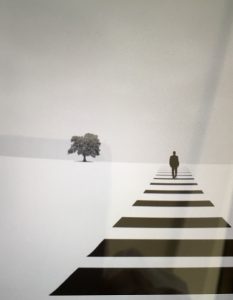
Plastic bags ban in different countries
In the United States, San Francisco was the first city banning plastic bags from supermarkets in March 2007 when Gavin Newsom was the mayor of San Francisco. The law was initially proposed by former SF Sheriff, Ross Mirkarimi. It requires stores to charge a ten cent fee for each paper bag and this encourages consumers to use reusable shopping bags. Several months later the rest of California passed the laws requiring supermarkets recycling plastic bags. In France, Italy and Spain outright bans were imposed decade ago. Recently an African county, Rwanda imposed a ban on plastic bags. In Rwanda, it is illegal to import or sell plastic bags. Plastic bags smugglers can face up to six months in prison and it is part of a bigger plan for the nation environmental cleanups.

October 2017:
Amazon’s Push Into Pharmacy Business
“A move by Amazon.com Inc. into the $412 billion pharmacy business would shake up how generations have gotten their medicines, but success could prove elusive even for the ever-expanding e-retailer. Amazon is considering entering the business. The U.S. market for selling prescription drugs appears ripe for an e-commerce makeover. Every year pharmacies in the U.S. dispense about 4.5 billion prescriptions. Patients pick up about 9 out of 10 prescriptions at a retail pharmacy, much the same way their parents did decades ago, even though their doctors likely sent their prescriptions to the store electronically. Consolidation of the drug supply chain in the hands of a few big players has also been criticized by many patients and drug manufacturers, who are looking for new ways to buy and sell medicines.
But while filling drug prescriptions online may be a big, inviting target for Amazon, it would pose very different challenges than selling books, toys and videogames, say industry experts. Medicines are highly regulated; they can be sold only by a pharmacy with a state-issued license. Most important: The patient usually doesn’t pay directly for their prescription drugs. The Seattle company has had an on-again-off-again interest in health care. In 1999, it bought a 40% stake in Drugstore.com Inc.
“There are a lot of differences between books and drugstores, but there are a lot of similarities, too,” Amazon Chief Executive Jeff Bezos said at the time. “Customers want selection, convenience, price and information.” Filling a drug prescription isn’t as straightforward as billing a customer’s credit card, then shipping the item, industry experts say. For patients with drug coverage, health insurers write the checks for the bulk of the cost of medicines. Either the insurers, or the companies they hire to manage prescription-drug benefits, also decide which medicines patients can get and how much they have to pay out of pocket toward the cost. A pharmacy must sort all that out before handing over a prescription. The pharmacy connects electronically with the drug-benefit manager to make sure the patient can get the prescribed drug under her health plan and calculate how much she and her health plan must pay. Many health-care industry officials and advisers believe Amazon, if it opted to enter the market, would probably seek to join with or buy a company with systems already in place for processing prescriptions and then integrate those systems into its online shopping.” WSJ

Truffle Prices Double to $3,200 a Pound
“Italy’s hot summer and dry fall could see supplies in some regions reduced by 90 percent. “Prices have doubled,” says Vittorio Giordano, vice president of Urbani Truffles, a major importer. Each fall, truffle aficionados around the globe pay dearly to have the lumpen tubers shaved atop risotto and scattered on pasta. But white truffles are finicky. Resistant to farming and highly perishable, they grow wild in forests, are hand-hunted by men with trained dogs or pigs, and are available fresh only from September into December. In 2016, there was an abundance of truffles, and prices plunged, but a hot summer followed by a dry fall this year have made for a dramatically smaller harvest this season. Foodies who like to dose their dishes with truffle products needn’t worry—Giordano says the shortage hasn’t yet hit flavored oils and butters. But diners may see slightly higher prices for the fresh, musky shavings on menus. Nicotra says he may have to increase the price of truffle dishes by $10; at the moment Felidia charges a $75 supplement for a dose of shavings. Instead, to allow diners the pleasure of eating tuber magnatum (often translated as “noble tuber”) restaurants will be eating much of the cost increase, which will cut into already slim margins. On average, food makes up around 28 percent of the price of a dish, Nicotra says. When you’re dealing with truffles, the food cost rises to 33 percent—this year, more.” Bloomberg

Family offices are looking beyond stocks and bonds to pursue direct investments in companies and real estate
“The term “family capital,” “family investment firm,” or “permanent capital investors” is used rather than “family office,” in an effort to avoid being associated with the more mundane details of family upkeep, like arranging a billionaire family’s travel schedule or even paying their taxes. Family capital can offer benefits a run-of-the-mill private equity firm can’t, including experience operating a similar company or regional expansion. And unlike private equity, which is forced to exit investments after five to seven years as their funds expire, capital from families doesn’t come with a fixed expiration date. This also allows them to spend money more freely on acquisitions.There are softer selling features, too. Family capital can be more willing to offer the family a way to remain part of the business and more open to letting management continue to operate than a private equity firm might be. “Family-owned companies like the idea of a like-minded family owner because they like that notion of stewardship and continued legacy,” says Susan Elolampi, head of the family coverage group for North America at JPMorgan Chase & Co.’s investment bank. “They would like to have a long-term patient owner, who might be less likely to move the business from its hometown, fire workers, or make decisions that may be good for a company’s near-term valuation but harmful for its long-term prospects.”
Bankers, advisers, and family office employees who have been part of these sorts of deals provide conflicting estimates of how many family offices are capable of such acquisitions, ranging from a half-dozen to several hundred. What’s clear is that they’re getting better at working together to pool capital in a short time frame to go after deals together and compete on price.The amount of capital moving around has ballooned as well. Family offices did $100.6 billion in deals in 2016, compared with $25.1 billion in 2011, according to figures compiled by PitchBook Data.” Bloomberg

Can judges be Facebook friends with lawyers?
According to the latest rule by a court in Miami, judges can be Facebook friends with the lawyers. The American Bar Association previously cautioned judges about their use of social media. Currently in the legal world, there is divided opinions about the boundaries of virtual friendships between judges and lawyers. Recently a Florida law firm bringing a fraud lawsuit against a company and the judge in this case was a Facebook friend with the lawyer of the company; the law firm requested his removal. They argued that in that case, the judge cannot be impartial. On the other hand, some judges have created public profiles and are engaging with others online.

Equifax Another Data Breach in March 2017
According to the Wall Street Journal, Equifax Inc, the credit reporting company that suffered a massive breach of consumer data also supplied identity verification services to the U.S. Social Security Administration and worked for Mediocre Services to verify people’s eligibility for health insurance subsidies. Equifax hired cyber security company FireEye in March to investigate March break in and then another cyber attack occurred in May. These attacks exposed personal information such as name, date of birth, address and Social Security numbers of the majority of U.S. adults.

The Mystery of Flushing Away €100,000
According to the Geneva daily Tribune de Geneva, prosecutors in Geneva are investigating why two women flushed down the toilet the amount of €100,000 in €500 bank notes at the UBS branch in the Swiss city. The local authorities were alerted after the damage to the plumbing was reported. Then the investigators used video surveillance to identify two women who stuffed the notes down the toilets. Euro currency is not used in Switzerland and they still using Swiss Franc.

Women in Technology
“Women hold 23% of roles in the technical ranks at the top 75 Silicon Valley companies, according to the U.S. Equal Employment Opportunity Commission. A report from the commission attributes the scarcity of women in those roles to inhospitable work cultures, isolation, a “firefighting” work style, long hours and a lack of advancement. Terre Layton, an engineer by training, had worked in Silicon Valley for nearly two decades, for small startups and large companies such as HP Inc. and Sun Microsystems Inc., before she joined Sephora in 2011. Recruited as a product manager to lead the retailer’s website redesign, Ms. Layton says she found being in the presence of so many women leaders empowering after years spent in male-dominated workplaces. When it came time to brainstorm ideas, or even articulate concerns about a project’s direction, bosses made a point of asking team members for their opinions, she says. “You knew you were being heard. You had a voice,” says Ms. Layton, who last worked for Sephora in 2015 and now advises early stage startups on product management and user experience.
Sephora’s owner, the French luxury conglomerate LVMH Moët Hennessy Louis Vuitton maintains a global workforce of 134,500 that is 74% female. Some 38% of key executive positions are filled by women, up from 26% in 2007. And LVMH has committed to a goal of having women in at least half of its key executive positions by 2020. Recruiters say those numbers, along with Sephora’s success—the company opened 100 stores in 2016 and recorded double-digit profit growth, according to LVMH filings—make it easy to attract talented women in tech. Women are drawn to a company of “bright, intense and accomplished women,” says Asheley Linnenbach, an executive-search consultant who has helped the retailer fill a number of roles in recent years. A similar philosophy applies to staffing technology teams, where company recruiters encourage women to consider roles that might not fit precisely with their skills and experience. At Sephora, Nida Mitchell, 29, got her chance to grow into a new role when she was promoted from web developer to IT project manager after two years at the company. The new job put her in charge of 14 male engineers, most of whom were at least 10 years her senior. She encountered roadblocks on one of the team’s first big projects, updating Sephora’s computing infrastructure ahead of the chain’s expansion to Brazil.” WSJ
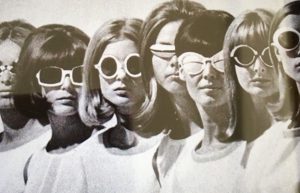
SILICON ISN’T JUST FOR COMPUTERS. IT CAN MAKE A PRETTY GOOD KIDNEY, TOO
“Kidneys are the body’s bookkeepers. They sort the good from the bad—a process crucial to maintaining a stable balance of bodily chemicals. But sometimes they stop working. Diabetes, high blood pressure, and some forms of cancers can all cause kidney damage and impair the organs’ ability to function. Which is why doctors have long been on the lookout for ways to mimic their operations outside the body. Now, after more than 20 years of work, one team of doctors and researchers is close to offering patients an implantable artificial kidney, a bionic device that uses the same technology that makes the chips that power your laptop and smartphone. Stacks of carefully designed silicon nanopore filters combine with live kidney cells grown in a bioreactor. The bundle is enclosed in a body-friendly box and connected to a patient’s circulatory system and bladder—no external tubing required.The device would do more than detach dialysis patients—who experience much higher rates of fatigue, chronic pain, and depression than the average American—from a grueling treatment schedule. It would also address a critical shortfall of organs for transplant that continues despite a recent uptick in donations. For every person who received a kidney last year, 5 more on the waiting list didn’t. And 4,000 of them died. There are still plenty of regulatory hurdles ahead—human testing is scheduled to begin later this year—but this bioartificial kidney is already bringing hope to patients desperate to unhook for good.” Wired

Rise of the Tech Bros Means Gender Pay Gap May Only Widen
“Nearly four men graduate for every woman who earns a bachelor’s degree in engineering, a figure that’s barely budged in a decade. Computer science and math hold their own distinction: the ratio of three men graduating for every woman has actually worsened from two decades ago. Female representation in Canadian university STEM courses suggests the situation isn’t about to change much. Nearly four men graduate for every woman who earns a bachelor’s degree in engineering, a figure that’s barely budged in a decade. Computer science and math hold their own distinction: the ratio of three men graduating for every woman has actually worsened.
Caranci’s team said numerous studies refute the idea raised by an engineer who was fired from Google in part after writing a memo that said women are biologically less suited to be engineers than men. If high proficiency in math ultimately underpins the pursuit of STEM fields, females have it, statistics show. Fifteen-year-old females in Canada, Singapore, Korea, and Switzerland outperform their U.S. male peers in the 95th percentile, according to the OECD’s Program of International Student Assessment. So what needs to be done to get more women in STEM? Engage girls in science at school, make paths to STEM careers clear and even consider making courses in computer science and foundational engineering mandatory, Caranci’s team suggests. One U.S. college made the simple change of renaming its computer science classes to include the words “creative” and “problem solving” to boost enrollment. At work, reducing biases, marginalization, and self-selection into technical and part-time roles is key, the study said. Companies need to track and measure outcomes within hiring and career development. “Firms that argue there’s insufficient supply of women need to first ensure the elimination of attitudes that can create workforce friction that cause women to either self-select out of the STEM workforce, or shift involuntarily into part-time ranks,” the study says. “To have run the gauntlet through a 20-year educational journey, only to experience a fatal career blow due to corporate culture is a loss to society and the economy.” Bloomberg
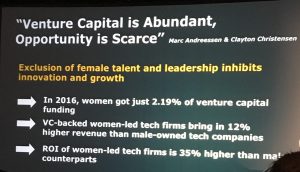
September 2017:
Lung, the third most important organ after the Brain & the Heart
On First World Lung Day, Sept. 25, Global Coalition of Respiratory Health Organizations Issues Recommendations to Improve Lung Health
“The lungs are the front line of environmental exposure: two billion people are exposed to indoor smoke; one billion inhale outdoor polluted air; and one billion are exposed to tobacco smoke.
Emergency preparedness must be centered on the lungs as so many causative agents are disseminated through the air. For example, outbreaks of viral pandemics hit the lungs first, and most chemical and biologic weapons enter the body through the lungs.
FIRS calls for these essential actions to reduce the burden of respiratory disease and improve global health:
1. Increase awareness among the public and policy makers that respiratory health is a major component of global health;
2. Reduce the use of all tobacco products through universal adoption of the Framework Convention on Tobacco Control;
3. Adopt World Health Organization air quality standards to reduce ambient, indoor, and occupational air pollution for all countries;
4. Promote universal access to quality health care, essential medicines, and immunizations;
5. Improve early diagnosis of respiratory diseases through increasing public awareness of lung health and disease;
6. Increase training of health professionals worldwide in respiratory disease;
7. Standardize the monitoring and management of respiratory diseases with evidence-based national and international strategies; and
8. Increase research to prevent and treat respiratory diseases.”
ATS Press Release

Apple & Facial Recognition
“Face ID will be the primary tool to unlock the nearly $1,000 iPhone X. If Apple can get it right, the company could popularize a technology that has had a mixed record on other gadgets.
Apple has revealed a high-end smartphone with an “edge-to-edge” screen that has no physical home button.
The iPhone X – which is referred to as “ten” – uses a facial recognition system to recognise its owner rather than a fingerprint-based one.
Apple said FaceID can work in the dark by using 30,000 infra-red dots to check an identity, and was harder to fool than its old TouchID system.
It is Apple’s most expensive phone yet.
Facial recognition
Apple acknowledged that users might have concerns about using facial recognition to verify purchases via Apple Pay or to access their device.
But it claimed that while there was a one-in-50,000 chance that TouchID could be unlocked by a random stranger, the odds rose to one-in-one-million with FaceID.
Nevertheless, one expert said users might still be concerned the handset had no fingerprint sensor as an alternative.
“This is the steepest hurdle that they have,” commented Carolina Milanesi from market research firm Creative Strategies.
“A lot of consumers will be a little bit reluctant to use facial recognition as an ID system until Apple has proven that it is safe and works all the time.
“In the eyes of consumers TouchID wasn’t broken – so they may ask why Apple is trying to fix it.”
Other features announced about the handset included:
* its 5.8in (14.7cm) screen has 458 pixels per inch, making it the firm’s most detailed phone display to date. To mark this it has been branded “super retina”
* the lack of a home button is dealt with by requiring users to swipe up to access its apps, and to press a side button to summon its virtual assistant Siri
* portrait mode – in which the camera blurs a photo’s background – and a relighting tool can be used on pictures taken by both the front and rear cameras
* it has two hours more battery life than the iPhone 7″ BBC
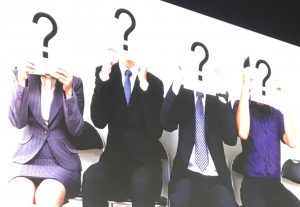
Researchers Identify Virus and Two Types of Bacteria as Major Causes of Alzheimer’s
“This major call for action is based on substantial published evidence into Alzheimer’s. The team’s landmark editorial summarises the abundant data implicating these microbes, but until now this work has been largely ignored or dismissed as controversial – despite the absence of evidence to the contrary. Therefore, proposals for the funding of clinical trials have been refused, despite the fact that over 400 unsuccessful clinical trials for Alzheimer’s based on other concepts were carried out over a recent 10-year period. Opposition to the microbial concepts resembles the fierce resistance to studies some years ago which showed that viruses cause certain types of cancer, and that a bacterium causes stomach ulcers. Those concepts were ultimately proved valid, leading to successful clinical trials and the subsequent development of appropriate treatments. Professor Douglas Kell of The University of Manchester’s School of Chemistry and Manchester Institute of Biotechnology is one of the editorial’s authors. He says that supposedly sterile red blood cells were seen to contain dormant microbes, which also has implications for blood transfusions.
“We are saying there is incontrovertible evidence that Alzheimer’s Disease has a dormant microbial component, and that this can be woken up by iron dysregulation. Removing this iron will slow down or prevent cognitive degeneration – we can’t keep ignoring all of the evidence,” Professor Douglas Kell said. Professor Resia Pretorius of the University of Pretoria, who worked with Douglas Kell on the editorial, said “The microbial presence in blood may also play a fundamental role as causative agent of systemic inflammation, which is a characteristic of Alzheimer’s disease – particularly, the bacterial cell wall component and endotoxin, lipopolysaccharide. Furthermore, there is ample evidence that this can cause neuroinflammation and amyloid-β plaque formation.” The findings of this editorial could also have implications for the future treatment of Parkinson’s Disease, and other progressive neurological conditions.” Neuroscience Magazine
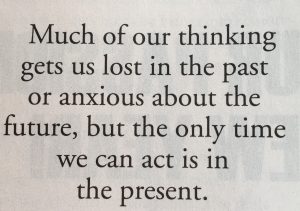
Where there are cell towers, there are teens living their lives on their smartphone
“We didn’t have a choice to know any life without iPads or iPhones. I think we like our phones more than we like actual people.” said a teenager.
The biggest difference between the Millennials and their predecessors was in how they viewed the world; teens today differ from the Millennials not just in their views but in how they spend their time. The experiences they have every day are radically different from those of the generation that came of age just a few years before them.
This generation is called iGen. Born between 1995 and 2012, members of this generation are growing up with smartphones, have an Instagram account before they start high school, and do not remember a time before the internet. The Millennials grew up with the web as well, but it wasn’t ever-present in their lives, at hand at all times, day and night. iGen’s oldest members were early adolescents when the iPhone was introduced, in 2007, and high-school students when the iPad entered the scene, in 2010. A 2017 survey of more than 5,000 American teens found that three out of four owned an iPhone.
The advent of the smartphone and its cousin the tablet was followed quickly by hand-wringing about the deleterious effects of “screen time.” But the impact of these devices has not been fully appreciated, and goes far beyond the usual concerns about curtailed attention spans. The arrival of the smartphone has radically changed every aspect of teenagers’ lives, from the nature of their social interactions to their mental health. These changes have affected young people in every corner of the nation and in every type of household. The trends appear among teens poor and rich; of every ethnic background; in cities, suburbs, and small towns. Where there are cell towers, there are teens living their lives on their smartphone.
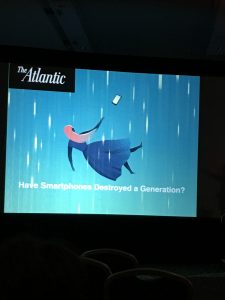
Rates of teen depression and suicide have skyrocketed since 2011. It’s not an exaggeration to describe iGen as being on the brink of the worst mental-health crisis in decades. Much of this deterioration can be traced to their phones.
If you were going to give advice for a happy adolescence based on this survey, it would be straightforward: Put down the phone, turn off the laptop, and do something—anything—that does not involve a screen. Of course, these analyses don’t unequivocally prove that screen time causes unhappiness; it’s possible that unhappy teens spend more time online. But recent research suggests that screen time, in particular social-media use, does indeed cause unhappiness. One study asked college students with a Facebook page to complete short surveys on their phone over the course of two weeks. They’d get a text message with a link five times a day, and report on their mood and how much they’d used Facebook. The more they’d used Facebook, the unhappier they felt, but feeling unhappy did not subsequently lead to more Facebook use.
Social-networking sites like Facebook promise to connect us to friends. But the portrait of iGen teens emerging from the data is one of a lonely, dislocated generation. Teens who visit social-networking sites every day but see their friends in person less frequently are the most likely to agree with the statements “A lot of times I feel lonely,” “I often feel left out of things,” and “I often wish I had more good friends.” Teens’ feelings of loneliness spiked in 2013 and have remained high since.
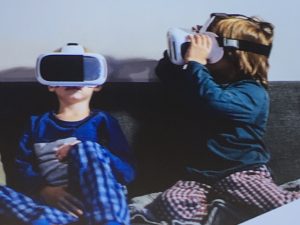
Teens who spend three hours a day or more on electronic devices are 35 percent more likely to have a risk factor for suicide, such as making a suicide plan. (That’s much more than the risk related to, say, watching TV.) One piece of data that indirectly but stunningly captures kids’ growing isolation, for good and for bad: Since 2007, the homicide rate among teens has declined, but the suicide rate has increased. As teens have started spending less time together, they have become less likely to kill one another, and more likely to kill themselves. In 2011, for the first time in 24 years, the teen suicide rate was higher than the teen homicide rate.
What’s at stake isn’t just how kids experience adolescence. The constant presence of smartphones is likely to affect them well into adulthood. Among people who suffer an episode of depression, at least half become depressed again later in life. Adolescence is a key time for developing social skills; as teens spend less time with their friends face-to-face, they have fewer opportunities to practice them. In the next decade, we may see more adults who know just the right emoji for a situation, but not the right facial expression.”
By Jane Twenge for The Atlantic
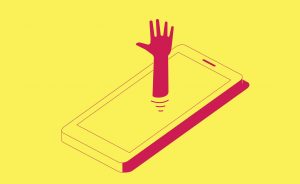
Nutrition Has Benefits For Brain Organization
“Nutrition has been linked to cognitive performance, but researchers have not pinpointed what underlies the connection. A new study by University of Illinois researchers found that monounsaturated fatty acids – a class of nutrients found in olive oils, nuts and avocados – are linked to general intelligence, and that this relationship is driven by the correlation between MUFAs and the organization of the brain’s attention network. The study of 99 healthy older adults, recruited through Carle Foundation Hospital in Urbana, compared patterns of fatty acid nutrients found in blood samples, functional MRI data that measured the efficiency of brain networks, and results of a general intelligence test. The study was published in the journal NeuroImage. “Our goal is to understand how nutrition might be used to support cognitive performance and to study the ways in which nutrition may influence the functional organization of the human brain,” said study leader Aron Barbey, a professor of psychology. “This is important because if we want to develop nutritional interventions that are effective at enhancing cognitive performance, we need to understand the ways that these nutrients influence brain function.” “In this study, we examined the relationship between groups of fatty acids and brain networks that underlie general intelligence. In doing so, we sought to understand if brain network organization mediated the relationship between fatty acids and general intelligence,” said Marta Zamroziewicz, a recent Ph.D. graduate of the neuroscience program at Illinois and lead author of the study.” Neuroscience Magazine

Harvard study strengthens link between breast cancer risk and light exposure at night
“A new study from Harvard has found greater risk of breast cancer in women who live in neighborhoods that have higher levels of outdoor light during the night.The findings are based on the Nurses Health Study (NHS), which has for decades been advancing our understanding of risks to women’s health.
The idea that electric light at night (LAN) might explain a portion of the breast cancer pandemic dates back to 1987. It was pretty far-fetched at the time because light doesn’t seem toxic in any way that could cause cancer. It can’t break chemical bonds and damage DNA, and it’s not a hormone like estrogen, which, in excess, can cause changes in the breast that can lead to cancer. Light is, by definition, the visible part of the electromagnetic spectrum, and so it does not include X-rays or even ultraviolet radiation, which can burn skin. Light is an exposure that challenges the conventional definition of a toxic substance. If a little asbestos is bad for you, more is certainly worse. The same holds for ionizing radiation (like X-rays), dioxin and lead. The difference is that the effects of exposure to light on human health depend crucially on timing. Over millions of years, we have evolved with a daily cycle of about 12 hours of bright light (the sun) and about 12 hours of dark. So during the day, our body expects light, whereas during the night it expects dark. There is a deep biology to this, and electric light is throwing it out of kilter. Too much evening light can delay the normal transition to nighttime physiology that should begin at dusk. An important part of this transition is a substantial rise in the hormone melatonin in the blood. Melatonin has been shown to have strong anti cancer effects in lab rats. The shorter the wavelength of the light – that is, light that has more blue relative to other colors – the greater impact on lowering melatonin and delaying transition to nighttime physiology.” The Conversation

Plastic, plastic & plastic:
there is a ton of plastic garbage for every person on Earth
“More than 9 billion tons of plastic has been produced since 1950, and the vast majority of it is still around. A new study that tracked the global manufacture and distribution of plastics since they became widespread after World War II found that only 2 billion tons of that plastic is still in use. Seven billion tons is stuck on Earth as garbage in landfills, recycled trash or pollution in the environment, including deep oceans, where it’s been discovered in the mouths of whales and the bellies of dead seabirds that mistook it for food. A small amount is eliminated in incinerators. As plastic becomes near-indestructible mountains of garbage on land and swirling vortexes of trash on the high seas, humans keep making more. Half of the plastic that people mostly use once and toss away was created in the past 30 years, the study says. In 1960, plastic accounted for just 1 percent of junk in municipal landfills across the world. As single-package containers led to an explosion in convenience and use, that number grew to 10 percent in 2005. A recent study in the Proceedings of the National Academy of Sciences estimated the amount of plastic debris floating in the open ocean at 7,000 to 35,000 tons. “If current trends continue, the researchers predict over 13 billion tons of plastic will be discarded in landfills or in the environment by 2050,” the American Association for the Advancement of Science said in a statement announcing the new study’s release Wednesday. It was published in the journal Science Advances.”

Fish eating lots of plastic. Even worse, they may like it.
“As you bite down into a delicious piece of fish, you probably don’t think about what the fish itself ate — but perhaps you should. More than 50 species of fish have been found to consume plastic trash at sea. This is bad news, not only for fish but potentially also for humans who rely on fish for sustenance. Fish don’t usually die as a direct result of feeding on the enormous quantities of plastic trash floating in the oceans. But that doesn’t mean it’s not harmful for them. Some negative effects that scientists have discovered when fish consume plastic include reduced activity rates and weakened schooling behavior, as well as compromised liver function. Most distressingly for people, toxic compounds that are associated with plastic transfer to and bioaccumulate in fish tissues. This is troubling because these substances could further bioaccumulate in people who consume fish that have eaten plastic. Numerous species sold for human consumption, including mackerel, striped bass and Pacific oysters, have been found with these toxic plastics in their stomachs. It is well known that plastic trash poses a serious threat to marine animals, but we are still trying to understand why animals eat it. Typically, research has concluded that marine animals visually mistake plastic for food. While this may be true, the full story is probably more complex. Plastic debris may smell attractive to marine organisms. The plastic debris is probably confusing for marine consumers because of both its appearance and its smell. That’s a problem, because if plastic looks and smells interesting to fish, it will be very hard for them to discern that it is not food.
This study also suggests that our consume-and-dispose culture is coming back to haunt us via the fish we eat. The next big question that it raises is whether plastic-derived contaminants can be transferred from plastic-eating fish to fish-eating humans. One way to mitigate the problem is to figure out why animals confuse plastic for prey so frequently, and our research has helped to do that. However, everyone can do something right now about ocean-plastic pollution by avoiding single-use plastic items and recycling plastic upon disposal. There is more work to be done, but we know enough now to make substantial headway on this global environmental issue.
By Matthew Savoca & Washington Post

Apple launching blogs , participating in conferences for its AI efforts
“The battle for artificial-intelligence expertise is forcing Apple to grapple with its famous penchant for secrecy, as tech companies seek to woo talent in a discipline known for its openness. Much of contemporary AI’s prowess stems from its ability to sieve patterns out of huge stacks of digital information. Companies like Google, Amazon, and Facebook have access to a lot of user data, but Apple, with its philosophy of not snooping on customers — in favor of charging megabucks for hardware — has rather tied its hands in that regard. The first post on its machine learning blog offers a small riposte, describing a method of creating synthetic images that can be used to train facial recognition systems. It’s not ground-breaking, but it’s oddly symbolic of what needs to be Apple’s approach to AI. Probably a blog worth following then.This chip would “improve the way the company’s devices handle tasks that would otherwise require human intelligence — such as facial recognition and speech recognition.” If Apple already has this chip, or a chip incorporating this chip, in-house and suitable for testing in prototype iPhones, then the company is likely very far along in the development of the technology. Apple may have completed the design of the Neural Engine after the window of opportunity to include it in the upcoming iPhone closed. If the Apple Neural Engine is a separate chip, then that window would have been larger than if it were going to be integrated into the A11 Fusion chip (given what are relatively long chip development cycles).” Bloomberg

Increasing Risk of Alzheimer’s Disease as the result of Less R.E.M. Sleep
“There are five stages of sleep. Stage one is light sleep. Stage two is when the body begins to prepare for deeper sleep, including stages three and four. Stage five is REM sleep. During this dream stage, the eyes move rapidly and there is increased brain activity as well as higher body temperature, quicker pulse and faster breathing. The first REM stage occurs about an hour to an hour-and-a-half into sleep and then recurs multiple times throughout the night as the cycles repeat. “Sleep disturbances are common in dementia but little is known about the various stages of sleep and whether they play a role in dementia risk,” said study author Matthew P. Pase, PhD, of Swinburne University of Technology in Australia. “We set out to discover which stages of sleep may be linked to dementia and while we did not find a link with deep sleep, we did with REM sleep.” For the study, researchers looked at 321 people with an average age of 67 from Massachusetts who participated in The Framingham Heart Study. During that study, sleep cycles were measured for each participant. Researchers collected the sleep data and then followed participants for an average of 12 years. During that time, 32 people were diagnosed with some form of dementia and of those, 24 were determined to have Alzheimer’s disease. The people who developed dementia spent an average of 17 percent of their sleep time in REM sleep, compared to 20 percent for those who did not develop dementia. After adjusting for age and sex, researchers found links between both a lower percentage of REM sleep and a longer time to get to the REM sleep stage and a greater risk of dementia. In fact, for every percent reduction in REM sleep there was a 9 percent increase in the risk of dementia. The results were similar after researchers adjusted for other factors that could affect dementia risk or sleep, such as heart disease factors, depression symptoms and medication use.” Neuroscience Magazine

August 2017:
New Uber CEO Khosrowshahi Faces Daunting Fix-It List
“Uber Technologies Inc. will appoint Expedia Inc.’s Dara Khosrowshahi to run the global ride-hailing leviathan. He’ll succeed co-founder Travis Kalanick, who led the firm to $20 billion in annual bookings before scandals forced him out. In hiring Expedia’s chief executive officer, Uber will land a seasoned deal-maker who’s accustomed to sparring with one of his new company’s biggest rivals, Alphabet Inc.
Khosrowshahi will face a number of hurdles as Uber — which has raised more than $15 billion from private investors — navigates its way toward a still-unscheduled initial public offering. The new top executive must grapple with the company’s persistent losses, a high-stakes trade secrets suit filed by Alphabet’s Waymo, a tarnished brand and low morale among Uber’s more than 15,000 global employees. Uber Technologies Inc.’s incoming Chief Executive Officer Dara Khosrowshahi inherits an embattled global business with crises sprawling across continents. Since Uber’s founding in 2009, the San Francisco-based company has tested the world’s tolerance for disruption and rule-breaking. The company’s toe-stepping ways, overseen by co-founder and former CEO Travis Kalanick, helped the ride-hailing company grow to more than 600 cities and a $69 billion private valuation. But the startup’s aggressive approach left a trail of self-inflicted wounds along the way. Those controversies including raising doubts about a passenger’s rape, the use of software meant to evade law enforcement officials, an intense human resources investigation sparked by sexual harassment charges, and a fierce legal battle with Alphabet Inc.– ultimately felled Kalanick after some of Uber’s largest investors asked for his resignation in June.” Bloomberg

Technological Upheavals
“It’s hard not to experience a bit of anxiety at the world’s recent technological upheavals—the endless stream of hacks, leaks, and cyberattacks; the whiplash advances in artificial intelligence and automation; the constant fear and loathing stoked by @socialmedia; and the Hieronymus Bosch spectacle that is democracy in the age of flying monkeys and fake news. It might be different if the leaders of the tech industry were offering reassurances, but instead we’ve got Tesla founder Elon Musk warning about the “existential risk” that AI poses to humanity, Y Combinator president Sam Altman expressing his certainty that automation is coming for millions of jobs, and countless tech moguls reportedly buying up “apocalypse insurance” in the form of New Zealand real estate. And if those rich white men have their hair on fire, God help the rest of the world racing to set up 2FA on Gmail .
Gaining access to your email isn’t that difficult. Phishers have grown considerably more sophisticated, as evidenced by the increasing intensity of ransomware attacks. Not that they need to be all that smart. “A cleverly composed email that says ‘I’m your tech support person and I need to know your password’ still works a shocking percentage of the time,” says Seth Schoen, senior staff technologist at the Electronic Frontier Foundation.” Wired
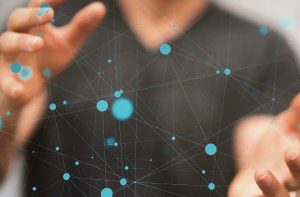
According to the latest research, children’s storybooks featuring human characters – not animals – are best to teach lessons like telling the truth
“The study shows 4 to 6 year olds learn moral lessons most effectively with human characters, not human-like animals, or anthropomorphic characters. So, stories about a conniving fox, a puppet who lies and gets in all kinds of trouble, or a turtle who perseveres, can often miss the mark, the study finds. “Many people believe children find stories with human-like animals captivating and relatable, but what we’re finding is that this is not the case,” says Patricia Ganea, associate professor of early cognitive development at OISE who was a lead researcher on the study. “Overall, children were more likely to act on the moral of the story when it featured a human character.
“That’s because many kids don’t see these characters as similar to themselves. They’re less likely to translate social lessons from these stories into their everyday lives,” “Books that children can easily relate to increase their ability to apply the story’s lesson to their daily lives,” she says. “It is important for educators and parents to choose carefully when the goal is to teach real-world knowledge and social behaviours through storybooks.” In the study, children listened to a story with either human or human-like animal characters who spoke and wore clothes. Each book taught children about sharing with others. Children’s altruistic giving was assessed before and after the reading.Overall, preschoolers shared more after listening to the book with human characters. Children who were read the book with animal characters shared less after the reading. Most children said these animals lacked human characteristics.” Neuroscience Magazine

Elon Musk leads 116 experts calling for the ban of killer robots
Open letter signed by Tesla chief and Alphabet’s Mustafa Suleyman urges UN to block use of lethal autonomous weapons
“Some of the world’s leading robotics and artificial intelligence pioneers are calling on the United Nations to ban the development and use of killer robots.
Tesla’s Elon Musk and Alphabet’s Mustafa Suleyman are leading a group of 116 specialists from across 26 countries who are calling for the ban on autonomous weapons. The UN recently voted to begin formal discussions on such weapons which include drones, tanks and automated machine guns. Ahead of this, the group of founders of AI and robotics companies have sent an open letter to the UN calling for it to prevent the arms race that is currently under way for killer robots. In their letter, the founders warn the review conference of the convention on conventional weapons that this arms race threatens to usher in the “third revolution in warfare” after gunpowder and nuclear arms. The founders wrote: “Once developed, lethal autonomous weapons will permit armed conflict to be fought at a scale greater than ever, and at timescales faster than humans can comprehend. These can be weapons of terror, weapons that despots and terrorists use against innocent populations, and weapons hacked to behave in undesirable ways.”We do not have long to act. Once this Pandora’s box is opened, it will be hard to close.”

The letter, launching at the opening of the International Joint Conference on Artificial Intelligence (IJCAI) in Melbourne on Monday, has the backing of high-profile figures in the robotics field and strongly stresses the need for urgent action, after the UN was forced to delay a meeting that was due to start Monday to review the issue. The founders call for “morally wrong” lethal autonomous weapons systems to be added to the list of weapons banned under the UN’s convention on certain conventional weapons (CCW) brought into force in 1983, which includes chemical and intentionally blinding laser weapons. Musk, one of the signatories of the open letter, has repeatedly warned for the need for pro-active regulation of AI, calling it humanity’s biggest existential threat, but while AI’s destructive potential is considered by some to be vast it is also thought be distant. This is not the first time the IJCAI, one of the world’s leading AI conferences, has been used as a platform to discuss lethal autonomous weapons systems. Two years ago the conference was used to launch an open letter signed by thousands of AI and robotics researchers including Musk and Stephen Hawking similarly calling for a ban, which helped push the UN into formal talks on the technologies. The UK government opposed such a ban on lethal autonomous weapons in 2015, with the Foreign Office stating that “international humanitarian law already provides sufficient regulation for this area”. Russia, the US and other countries are currently developing robotic tanks that can either be remote controlled or operate autonomously.” The Guardian
How Neurons Talk to Each Other
“Researchers at the University of Pittsburgh have uncovered the mechanism by which neurons keep up with the demands of repeatedly sending signals to other neurons. The new findings, made in fruit flies and mice, challenge the existing dogma about how neurons that release the chemical signal dopamine communicate, and may have important implications for many dopamine-related diseases, including schizophrenia, Parkinson’s disease and addiction.
The research conducted at Pitt and Columbia University was published online today in the journal Neuron. Neurons communicate with one another by releasing chemicals called neurotransmitters, such as dopamine and glutamate, into the small space between two neurons that is known as a synapse. Inside neurons, neurotransmitters awaiting release are housed in small sacs called synaptic vesicles. Freyberg initiated the research while at Columbia University. When the researchers triggered the dopamine neurons to fire, the neurons’ vesicles began to release dopamine as expected. But then the team noticed something surprising: additional content was loaded into the vesicles before they had the opportunity to empty. Subsequent experiments showed that this activity-induced vesicle loading was due to an increase in acidity levels inside the vesicles. “Our findings were completely unexpected,” said Freyberg. “They contradict the existing dogma that a finite amount of chemical signal is loaded into a vesicle at any given time, and that vesicle acidity is fixed.” The team then demonstrated that the increase in acidity was driven by a transport channel in the cell’s surface, which allowed an influx of negatively charged glutamate ions to enter the neuron, thus increasing its acidity. Genetically removing the transporter in fruit flies and mice made the animals less responsive to amphetamine, a drug that exerts its effect by stimulating dopamine release from neurons.” Neuroscience News

The pesticides stoping bumblebee queens from laying eggs and could spell the end for the wild bees
“A controversial pesticide can potentially wipe out common bumblebee populations by preventing the formation of new colonies, research has shown. The neonicotinoid chemical thiamethoxam dramatically reduces egg-laying by queen bumblebees, say scientists. Predictions based on a mathematical model suggest this could result in the total collapse of local populations of the wild bees. Lead researcher Professor Nigel Raine, from the University of Guelph in Ontario, Canada, said: ‘Bumblebee queens that were exposed to the neonicotinoid were 26 per cent less likely to lay eggs to start a colony.A reduction this big in the ability of queens to start new colonies significantly increases the chances that wild populations could go extinct.’Neonicotinoid pesticides are widely used in farms across the US and Europe, but in recent years both laboratory and field studies have linked them to the decline of bee populations. In 2013 a two-year temporary ban on the use of neonicotinoids on flowering crops was imposed throughout the European Union due to claims the nicotine-related chemicals can harm valuable pollinators. ‘This study shows that neonicotinoids could be having a devastating effect on wild bumblebee populations,’ Professor Raine said. “We urgently need to know more about how pesticides could be affecting other species to make informed decisions about the risks associated with using these chemicals.’ ” DM

Facebook Is Copying Houseparty Company For Group Video Chat
“Facebook is building a standalone app that incorporates ideas from Houseparty, the group video chat app that rose from the ashes of Meerkat, The Verge has learned. The app, which has the working name Bonfire, was recently demonstrated for employees. It is being targeted for a fall release, according to a person familiar with the matter. “We don’t have anything to share at this time,” a Facebook spokeswoman said.
Facebook’s move comes two years after Life On Air, which had helped usher in a new era of live broadcasting with its app Meerkat, pivoted to group video chat. The company’s founders, Ben Rubin and Sima Sistani observed that most people never broadcasted more than a handful of times — whether on Meerkat or its eventual competitors, Facebook Live and Twitter-owned Periscope. And so Rubin and Sistani built Houseparty, which notifies a user’s friends whenever they have the app open, inviting them to hang out virtually on their smartphones.” Stock news
According to the Wall Street Journal, Silicon Valley’s new reality is that starting a company is easy but it is hard to avoid getting squashed. The four giants: Google, Facebook, Apple and Amazon are increasingly making it difficult for startups to compete and stay independent. These four giant companies “have a combined market capitalization of $2.6 trillion, almost equivalent to the annual gross domestic product of France.” Facebook using an internal database to track its rivals and the startups that performing well. According to the Wall Street Journal, Facebook is stalking the Houseparty company by aggressively mimicking of smaller rivals. Their internal slogan is: “Don’t be too proud to copy.”

The Negative Impact of Action Video Games on the Brain
“A neuroimaging study reveals response learners show a decrease in hippocampal gray matter after playing action based video games for 90 hours. Human-computer interactions, such as playing video games, can have a negative impact on the brain, says a new Canadian study published in Molecular Psychiatry. For over 10 years, scientists have told us that action video game players exhibit better visual attention, motor control abilities and short-term memory. But, could these benefits come at a cost? In a series of studies Dr. Véronique Bohbot (Douglas Mental Health University Institute; CIUSSS de l’Ouest-de-l’Île-de-Montréal) and Dr. Greg West (Université de Montréal) demonstrate that the way that action (first-person shooter) video game players use their brains to navigate changes the impact the games have on their nervous system. “Thanks to navigation tests and brain scans, our studies show that response learners, those players using their brain’s autopilot and reward system to navigate, experienced grey matter loss in their hippocampus after playing action video games for 90 hours. The hippocampus is the key structure involved in spatial memory (orientation) and episodic memory (autobiographical events) within the brain. On the contrary, spatial learners, those using their hippocampus to navigate, increased their grey matter after playing for the same amount of time,” says first author Dr. Greg West, researcher and associate professor at the Université de Montréal.

People with lower amounts of grey matter in the hippocampus are known to be at increased risks of developing neuropsychiatric illnesses such as depression, schizophrenia, PTSD and Alzheimer’s disease. The causal link between human-computer interactions such as action games and actual illness is, however, not known at this time and needs to be determined through further long-term study.
Source: McGill University, Neuroscience Magazine
The Opioid Crisis
According to the American Thoracic Society, the opioid crisis in the United States has resulted in the increased admissions to hospital intensive care units. And numbers of ICU deaths from opioid overdoses is rising. According to the researchers, between Jan. 2009 and Sept. 2015, admission to the ICU at 162 U.S. hospitals in 44 states increased by 34 percent and deaths from these overdoses rose to 10 percent by 2015. The researchers also found that the cost of caring for these patients increased from $58,517 to $92,408 in the same period. Over seven years, 4,145,068 patients required ICU care at the hospitals contributing to the data base and 21,705 were patients who had overdosed on opioids, most commonly heroin. Among the opioid overdose patients, 25 percent experienced aspiration pneumonia, 15 percent rhabdomyolosis (release of dead muscle fiber into the bloodstream), 8 percent anoxic brain injury and 6 percent septic shock. Ten percent of patients who overdosed needed mechanical ventilation. According to the press release by ATS, the findings may not be generalizable to communities with fewer critical care resources.

Facial Recognition
Facebook Inc. is considered a pioneer in the field of facial recognition systems. Apple Inc. also bought Emotient company last year. It is a start up skilled in using technology that assesses emotions based on facial expressions. According to the Wall Street Journal, FaceFirst company that is based in Los Angles providing facial recognition systems for U.S, and international airports. Privacy advocates worrying that this technology can be used to conduct “the surveillance without cause.”
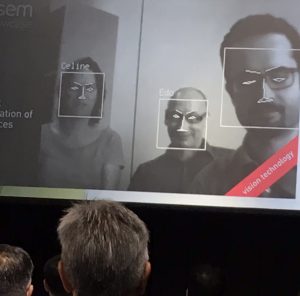
Artificial Intelligence
The technology applications analyzes a vast amount of data and then searching for patterns. The data-analysis technology and automated decision making are very different from human analysis and decision making; they follow the patterns and it lacks the creativity of human involvement; the only advantage is the speed that human cannot beat it.

Privacy is a real concern when the personal behavior of the users is tracked. Aggregating data from customers as large companies do has many problems including the fact that different companies don’t track the same variables in the same way and usually the important ones are missing.
Ransomware & Greedy Hackers
Currently ransomware has turned into a multimillion dollar business. According to the researchers at the New York University, cyber criminals are gaining lots of money by exploiting users by their cyber attacks. Over the past two years more than $26 million has been paid to the hackers in bitcoins. The hackers infect a victim’s computer with a malicious software, then they encrypt the files on it and finally asked their victim to pay them in bitcoin if the victim wants to regain the access to the files in their computers. A recent variant is able to encrypt an infected computer in the seconds. In a recent move some hackers allow their victims to decrypt their files if they help infecting other computers that contain sensitive data.



